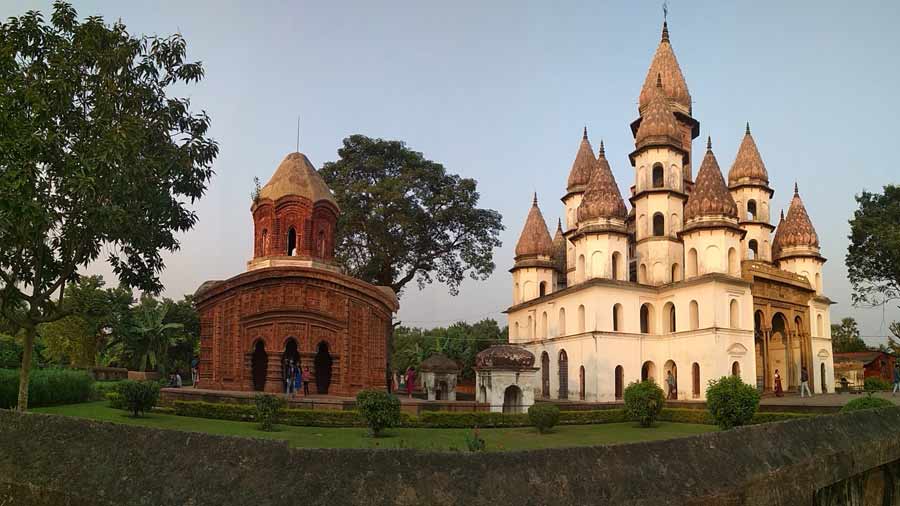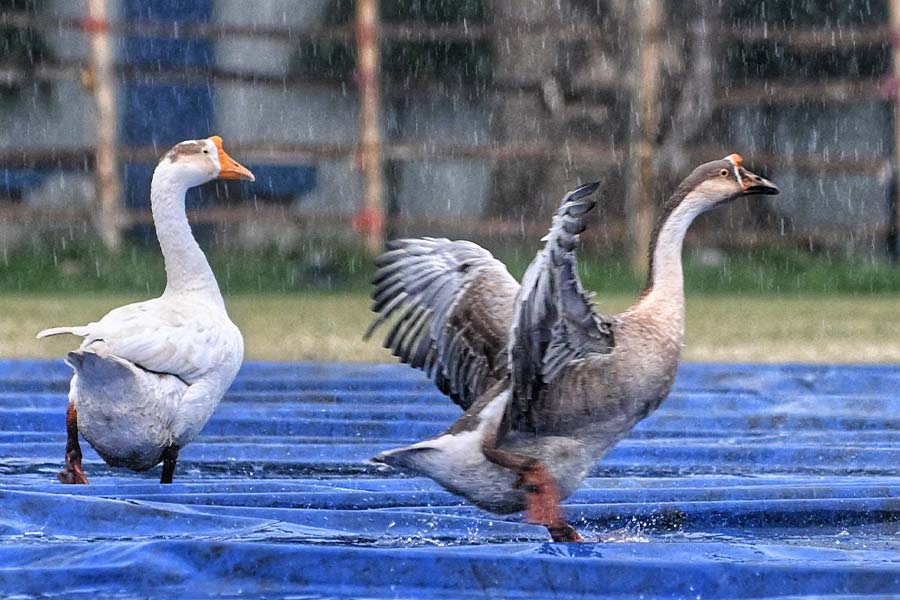Located on the eastern side of Rupnarayan River, Deulti is a popular destination for a weekend day tour drive from Kolkata. However, many are not aware of a small heritage circuit near Deulti under the jurisdiction of Bagnan Police Station, which is seldom approached by the visitors. No wonder minimal effort has been made to promote these places.
Start your tour with the colossal Aatchala-styled temple of Madangopal Jiu Temple at Mellak located on the northern side of Mumbai-Kolkata highway at Deulti close to the Sattwik Dutta Hospital. Though the temple is a protected monument under the West Bengal State Archeology Department, the approach road is in a pathetic state. One has to walk the last few yards.
Madangopal Jiu Temple
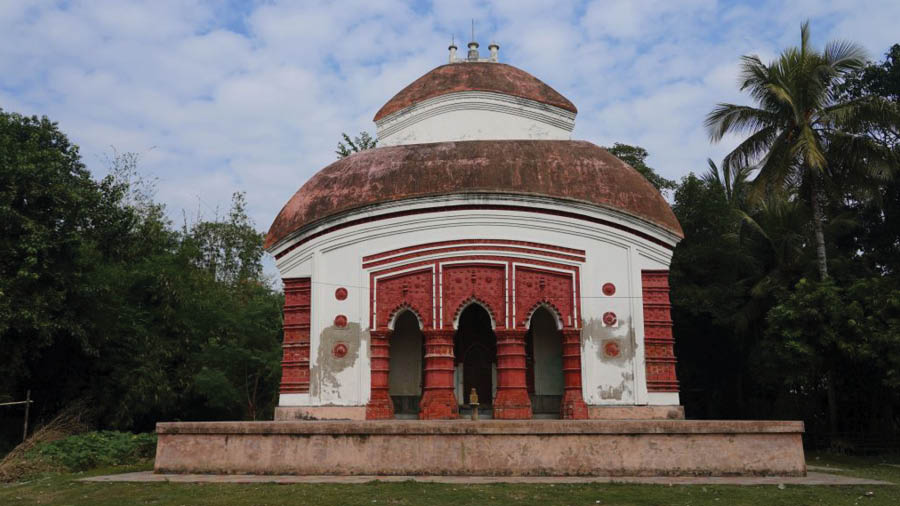
Madangopal Jiu temple in Mellak, built in 1651, is the oldest surviving brick-built temple at Howrah
Amitabha GuptaThe Madangopal Jiu Temple with triple arched entrance was built by zamindar Mukunda Prasad Roy Chowdhury of Mandalghat Pargana in 1651. The temple was in a bad shape till recent times when the West Bengal State Archeology department renovated it. This is the oldest surviving brick built temple at Howrah and one of the largest Aatchala temples of West Bengal. The arch panels are decorated mainly with lotus motifs and a series of mythological animal figures along the arches. The left and right arches from the temple side also depict some figurines including a Saraswati with a veena and Krishna playing flute. The pillars have large figures of mythical animals and some female acrobats along with several motifs of lotus. On the raised platform of the temple stands a stone-built Garuda with folded hands. The walls beside the door to the inner sanctum have some terracotta works featuring makara (Vahana of Ganga). The deities of the temple are Madangopal and Radha.
Sarat Smriti Mandir
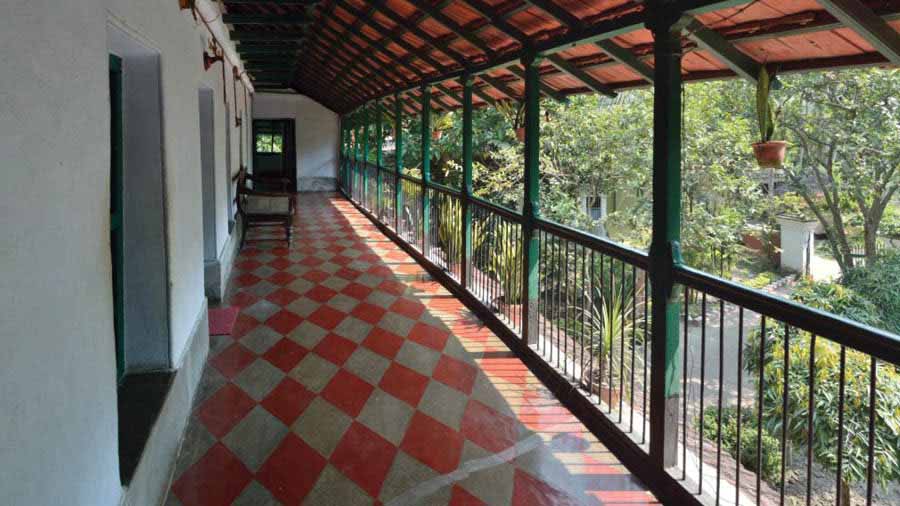
The southern veranda of first floor of Sarat Smriti Mandir at Samtaberia
Biswarup Ganguly, Wikimedia CommonsFrom the Madangopal Jiu temple, the next spot is the Sarat Smriti Mandir, a house museum located 1.5 km north in the village of Samtaberia, where prominent Bengali novelist Sarat Chandra Chattopadhyay stayed for 12 years and wrote some of his prominent novels, like Devdas, Baikunther Will, Dena Paona, Mahesh and Ramer Sumati while staying in this house.
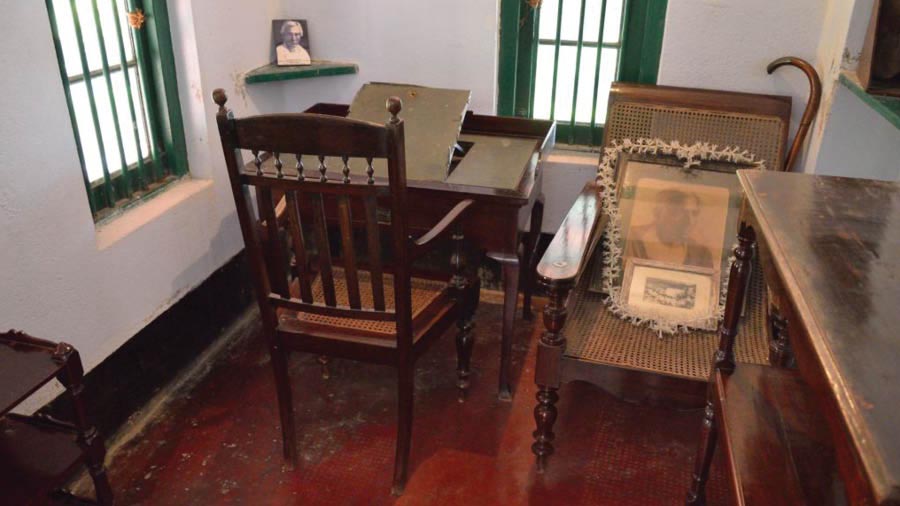
The study room of Sarat Chandra Chattopadhyay, with his used furniture at Sarat Smriti Mandir
Biswarup Ganguly, Wikimedia CommonsSarat Chandra’s second wife, Hironmoyee Debi and his brother Swami Vedananda, a disciple at Belur Math also stayed here. All of their samadhis are in the gardens of the house. The two storeyed house was constructed in the year 1923 by a local worker named Gopal Das. Both the floors have long spacious corridors. Compared to the corridors, the rooms are rather small, ideal for a writer. The house was declared a heritage site by the West Bengal Heritage Commission in 2001 and was finally repaired and renovated in 2009.
Radhe Shyam Jiu Temple
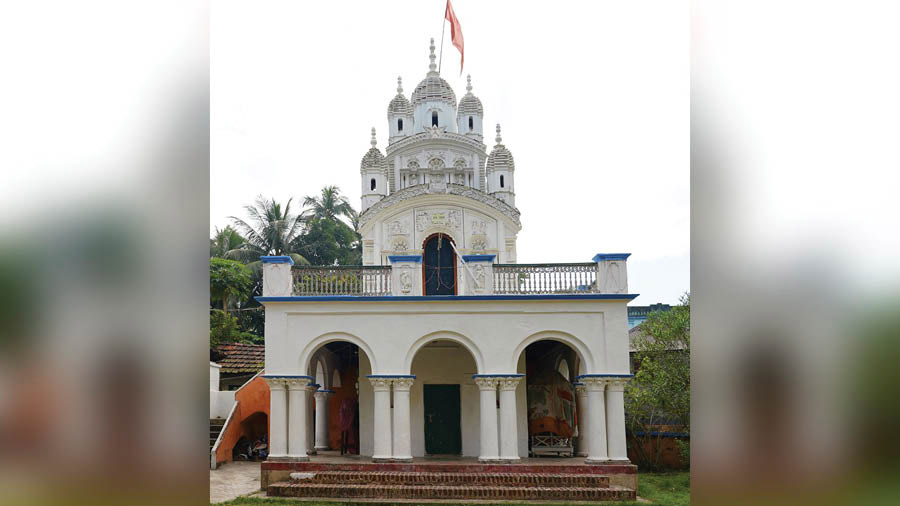
The Radhe Shyam Jiu Temple of the local Chowdhury family at Kulia
Amitabha GuptaFrom Sarat Smriti Mandir a drive of 14 km North through a metal road takes the visitor to the Kulia Ghat. Walking over a bamboo-built bridge over Mundeswari river, followed by a walk of about 400 metres leads to the Radhe Shyam jiu Temple of the local Chowdhury family at Kulia. The original temple was a flat roofed structure built in the 18th century by Durgadas Chowdhury, which became dilapidated with the passage of time.
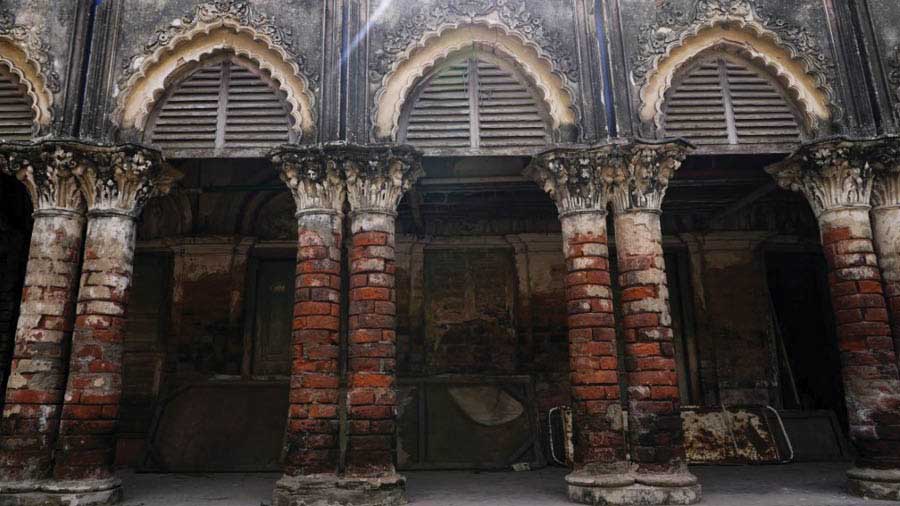
An old building with corinthian pillars at Kulia, Howrah district
Amitabha GuptaThen in 1929, the temple was rebuilt by Abinash Chowdhury who added a Navaratna superstructure to the temple studded with exquisite stucco figures featuring Mahishasura Mardini Durga, Gour Nitai, Radha Krishna, Ram Sita, Shiva, Narada and Krishna Lila scenarios, along with a new foundation stone. Adjacent to the temple is a unique memorial temple of Chowdhury family lying in utter neglect. There is a small Dolmancha and one-storeyed building studded with Corinthian pillars nearby.
Navaratna Laxmi Janardan temple

The Navaratna temple of Laxmi Janardan of Roy family at Ganeshpur village, Howrah district
Amitabha GuptaIf you are craving for visiting more built heritage structures, come back to the highway and head back towards Bagnan. From Bagnan Library take a right and cross the Bagnan Railway Station to reach Bagnan auto stand. If you are in a vehicle, drive straight, else hop into an auto rickshaw and get down at Sasti bus stand located 15 km south. Located 5 km east is a colossal Navaratna temple of Laxmi Janardan at Ganeshpur village. As per its foundation stone, the temple was established in 1820 by Chaitanya Charan Roy. In a rare instance, the artisan’s name is also mentioned which is Ram Prasad Chandra Mistry. The triple entrance temple has some terracotta motifs on the curved arch above the entrance on the front walls featuring Rama and Ravana battle, Krishna Lila, Narada, Shiva and social scenarios. Although declared a heritage monument along with nearby flat-roofed Melai Chandi temple in 2001 by the West Bengal Heritage Commission, it’s a pity that the temples are in utter neglect.
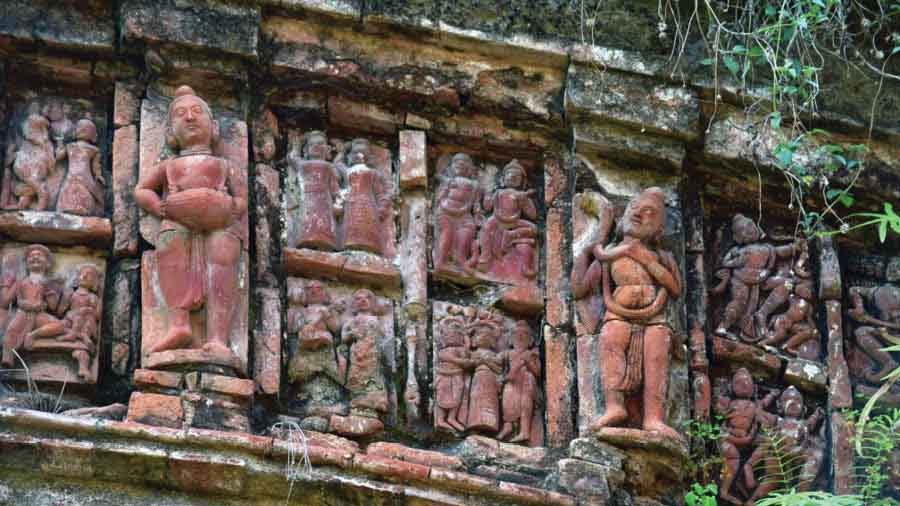
Terracotta plaques on the arches of Laxmi Janardan of Roy family at Ganeshpur village
Amitabha GuptaOn the way to Ganeshpur, there are two more heritage sites. One is the Navaratna Dadhibaman Jiu temple of Das family at Bantul and a Dalan temple of Mahakali at Khalor. Both the temples have been renovated and are devoid of any terracotta work. The present wooden deity of Kali was built in 1888.
Travel information:
Deulti is 64 km southwest of Kolkata. By car, one has to drive through NH 16 (Mumbai Kolkata highway) via Panchla, Uluberia and Bagnan. There are several local trains from Howrah to Deulti. One can reach the destinations by local toto or auto rickshaws. There are several eateries on the highway near Deulti and Bagnan.



